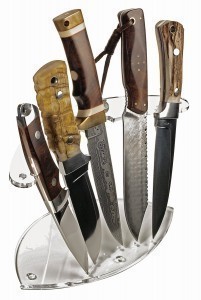Ancientblacksmithscould only influence the properties of iron alloys via their carbon content. This gave them either a soft and tough or a hard but brittle steel. However, a tough and hard material was particularly in demand for swords. To overcome this shortcoming, Celtic blacksmiths combined different iron alloys to produce the material that later became known as Damascus steel or damascus. It owes its name to the trading center through which the composite material of oriental origin came to Europe. However, while Indian and Arabic damask was created through a sophisticated smelting process, European blacksmiths developed the art of folding two alloys into many thin layers.
Today, there are iron alloys that are both hard and tough, but they are often difficult to process using 3D printers. A team from the Max Planck Institute for Iron Research in Düsseldorf and the Fraunhofer Institute for Laser Technology in Aachen has now developed a process that allows steel to be produced layer by layer in a 3D printer and the hardness of each individual layer to be adjusted in a targeted manner, making it possible to produce Damascus steel. The microstructure of the individual layers is changed during the 3D printing process so that the final component has the desired properties without any subsequent heat treatment of the steel. The respective alloy is supplied in finely powdered form, melted by a laser beam and then applied layer by layer to the workpiece to be produced. However, the laser beam not only melts the material. It can also be used to heat the uppermost layer of the already resolidified metal. This is precisely what the team used to specifically change the crystal structure of the steel in individual metal layers and thus influence the mechanical properties without changing the chemical composition.
To do this, they developed a special alloy consisting of iron, nickel and titanium. Initially, this alloy is relatively soft, but under certain conditions, small nickel-titanium microstructures form, which then hinder plastic deformation and ensure a particular hardness. In order to create these structures, the researchers interrupted the printing process for a certain period of time after each newly applied layer. This allowed the metal to cool down to below 195 degrees Celsius. Below this temperature, a transformation of the crystal structure begins in the steel, creating the so-called martensite phase, and only in this phase can the nickel-titanium microstructures be formed. In order for the precipitates to actually form, however, they need to be heated again. To do this, the researchers use the laser energy with which the next layer is printed. Layers that were directly coated with the next layer without a break, on the other hand, remain softer because they are not yet present as martensite at this point. Tests have confirmed an excellent combination of strength and ductility. Such composite materials could be interesting for 3D printing of aerospace components or tools, among other things.




